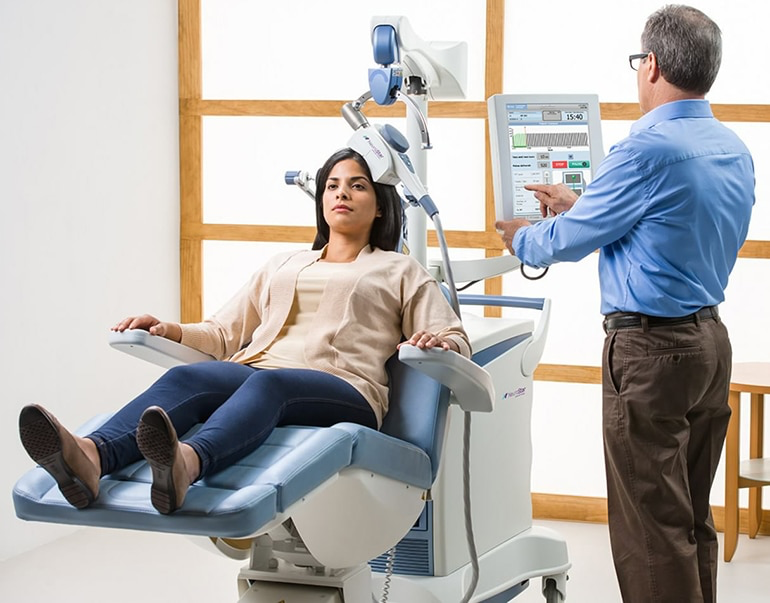The STAR-D study showed that about 30 percent patients with depression in the course of recurrent depressive disorders go into remission after using the first antidepressant in a given episode, and that the rates of remission decrease and the rates of subsequent relapse increase with the number of unsuccessful antidepressant treatments. About 50%. patients with depression suffer from drug-resistant depression, defined as failure to respond to treatment with two consecutive antidepressants belonging to different groups, in the right dose and for the right time.
Such patients are offered further changes in pharmacological treatment, including various pharmacological methods of augmentation. It may be associated with systemic side effects and may be of limited effectiveness. An alternative or complementary treatment in this group of patients may be the use of modern methods of brain stimulation appropriately selected for the patient’s needs.
Transcranial magnetic stimulation (TMS)
Transcranial magnetic stimulation – TMS is the most widely used among modern methods of brain stimulation. It uses magnetic stimulators consisting of a capacitor and an electromagnetic coil. TMS is based on Faraday’s law of electromagnetic induction. The flow of current through the coil generates magnetic pulses, which in turn, as they travel through the skull, induce a stimulating current that depolarizes the nerve cells.
Contemporary development of TMS was initiated by Barker et al., Who constructed a device with which they could stimulate the muscles of the hands by stimulating the motor cortex. Thus initiated the intensive development of TMS as a neurophysiological diagnostic tool for the study of brain function and for therapeutic purposes.
Learn more – TMS for Anxiety
In the latter case, TMS is used in the form of repeated series of magnetic pulses (repetitive transcranial magnetic stimulation – rTMS). Due to the frequency of the series of pulses, rTMS is distinguished with high (> 1 Hz) and low (≤ 1 Hz) frequency, increasing and decreasing the excitability of the cerebral cortex, respectively. The use of TMS in the form of repeated pulses is expected to induce longer-lasting changes in brain function resulting from long term potentiation (LTP) or long term depression (LTD). RTMS is a non-convulsive, topically applied and effective method. through neural circuits.

